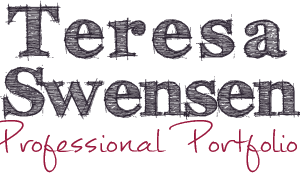This gallery of photographs provides evidence towards focus area 1.1, focus area 1.2, and focus area 2.1. The use of concrete materials in the classroom is supported by Piaget’s learning theories but using materials also increases students’ engagement in the learning process. The students in these lessons were aged between 8 and 10 years old which according to Piaget’s theory of cognitive development would place these students in the concrete operations stage. A main characteristic of this stage is that students are unable to think in abstractions so one of their learning needs is that they need to experiment with materials (Duchesne, McMaugh, Bochner & Krause, 2013). More recent research does suggest some students can think abstractly, however the use of concrete materials remains engaging for students and provides them opportunity to apply concepts to real life situations (Siemon, Beswick, Brady, Clark, Faragher, & Warren, 2011) Continue reading Using Concrete Materials in Maths
Tag: Focus Area 1.2
1.2 Understand how students learn
Graduate teacher: Demonstrate knowledge and understanding of research into how students learn and the implications for teaching.
Proficient teacher: Structure teaching programs using research and collegial advice about how students learn.
Addressing Literacy and Numeracy in Science
During the C2C unit “Hot Stuff” the year 3 students investigated how heat is produced and the behaviour of heat. This unit of work provided opportunity to address some of the general capabilities from the Australian Curriculum and provides evidence towards focus area 1.2, focus area 2.2, focus area 2.3, and focus area 2.5.
Literacy was addressed throughout the unit as students were required to communicate their findings in a variety of way including written responses and diagrams. During term 2 students undertook a unit on chance in maths which involved consolidating their ability and understanding of representing data in charts, tables and graphs. This science unit in term 3 provided students the opportunity to revise their knowledge that they gained in maths and apply what they used successfully in another context. Sequencing the maths and science learning in this way ensured that students already had a solid understanding of graphs before the requirement was necessary in the Science unit.

Student engagement in History
 The history unit delivered to the year 3 class was sourced from Education Queensland’s C2C. One of the initial lessons of unit 2 required students to create a time line. In the previous unit I noted that some students had difficulty creating a personal timeline. They were able to identify significant events in their life, but some students had difficulty representing these events chronologically on the prepared timeline that was to be pasted into their books. Research indicates that there are a range of factors that can initiate situational interest resulting in greater engagement and learning (Duchesne, McMaugh, Bochner & Krause, 2013). Based on this, I adapted the lesson in unit 2 to provide students the opportunity to create a visual display, providing them with some choice as to the presentation of the timeline but with the requirement of the photographs needed to be in chronological order. Taking away the element of writing and thinking of their own events, students were provided with pre-labeled photographs. In this task, all students created a visually pleasing timeline that was chronologically correct.
The history unit delivered to the year 3 class was sourced from Education Queensland’s C2C. One of the initial lessons of unit 2 required students to create a time line. In the previous unit I noted that some students had difficulty creating a personal timeline. They were able to identify significant events in their life, but some students had difficulty representing these events chronologically on the prepared timeline that was to be pasted into their books. Research indicates that there are a range of factors that can initiate situational interest resulting in greater engagement and learning (Duchesne, McMaugh, Bochner & Krause, 2013). Based on this, I adapted the lesson in unit 2 to provide students the opportunity to create a visual display, providing them with some choice as to the presentation of the timeline but with the requirement of the photographs needed to be in chronological order. Taking away the element of writing and thinking of their own events, students were provided with pre-labeled photographs. In this task, all students created a visually pleasing timeline that was chronologically correct.
During the task, it was slightly differentiated. Whilst the majority of students worked independently, I worked with a small group of students to provide assistance to read the labels. With this assistance they were able to identify the date and determine the order that the photographs needed to be placed.
This provides evidence towards focus area 1.2, focus area 1.5, focus area 2.1, and focus area 3.2.
References
Duchesne, S., McMaugh, A., Bochner, S., & Krause, K. (2013) Educational Philosophy For Learning and Teaching, 4thedn, South Melbourne, Cengage Learning Australia
Aspects of a trauma informed approach
This written piece is from an assignment in my elective topic Creating Calmer Classrooms at Flinders University in 2015. It is evidence of my knowledge and understanding of how to recognise signs that a student has experienced trauma, the impact of trauma on learning and development, and how my teaching practice can be trauma informed.
This demonstrates achievement towards focus area 1.1 and focus area 1.2.
[embeddoc url=”https://teresaswensen.edublogs.org/files/2016/02/Assignment-3-27eknjv.docx” viewer=”microsoft”]
